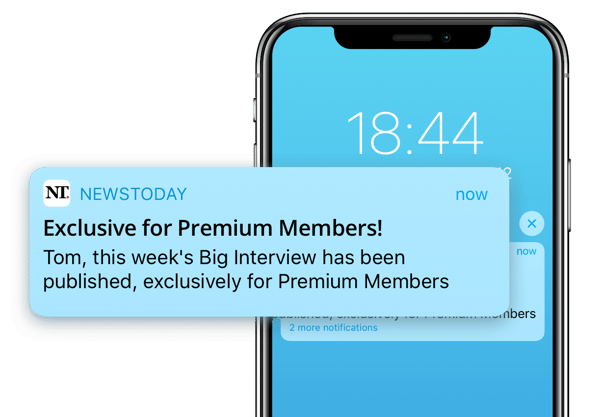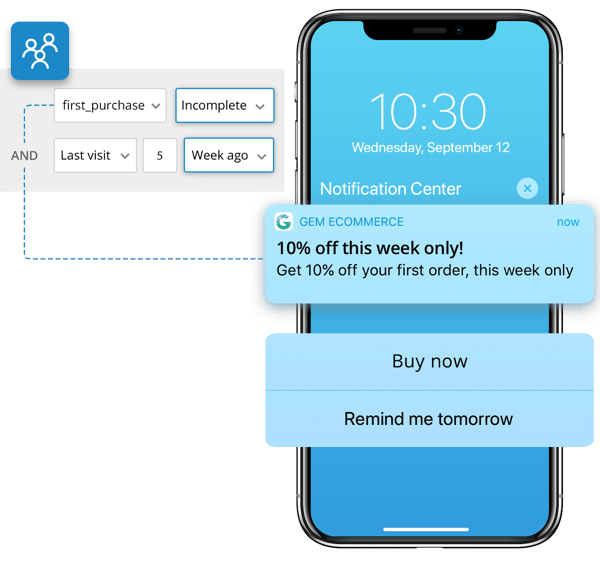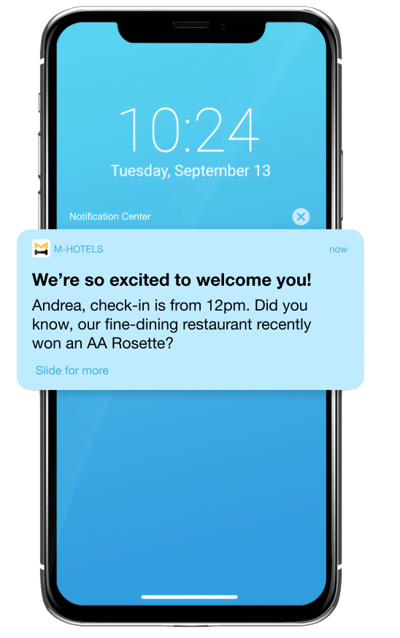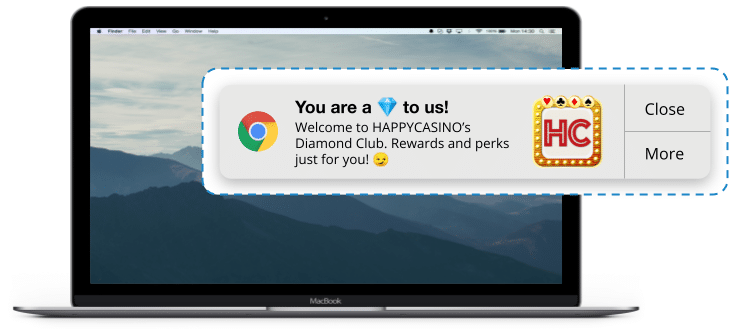Growth marketing is more important for B2C brands than ever
Growth marketing comes in many forms, and anyone involved with marketing at some level is obviously driving growth. Or at least is aiming to.
But in a B2C context, growth marketing is often called “customer marketing” and is a strategy around nudging existing customers towards repeat purchases, upselling added services and new products and encouraging higher average spends over time.
In other words, it’s about getting more value (and revenue) from the customers you already know about.
In this article, we argue the case for making growth marketing a priority and how you can do just that at various stages throughout the customer’s lifecycle.
CAC is going up, CLV is going down
Turning a profit is all about understanding your CAC. That’s the cost of acquiring a customer. And that’s getting more and more expensive. In fact, it’s been rising sharply for years, now up an eye-watering +60% since 2014.
Side by side with this, CLV (customer lifetime value) is steadily falling. That’s the amount that the average customer spends with you in total, across multiple purchases over the course of any number of years.
Now isn’t the place to dissect why both of these things have been happening, but the short version is that competition between brands across every vertical is more intense than ever, pushing up advertising costs. At the same time, the long term allegiance that brands could once count on from their customers has been eroded by choice, convenience and low-cost alternatives.
The upshot of these two trends is stark; more money being spent on acquisition and less money made back means tighter margins and less profit.
So with CAC going up and CLV going down, it’s something of a one-two combo for B2C marketers looking to move the needle in the right direction.
The rising cost of acquisition and typically low spend means B2C brands must maximise their share of wallet from existing customers and increase their overall customer lifetime value (CLV).
Fewer prospects at the top of the digital funnel
Huge changes are happening in the (occasionally murky) world of digital advertising.
The impending elimination of 3rd party cookies from Google’s Chrome browser means no more lookalike advertising campaigns. And that means fewer prospects at the top of your funnel.
It also likely means that advertisers will be forced to outspend competitors on Facebook, Instagram and the other walled gardens. It also suggests a return to expensive, bought-media.
Yes, the full-page takeover is back with a bang. And it’s going to cost you.
Meanwhile, the CAC keeps heading north.
Although D-Day (or is it C-Day?) is fast approaching, no one knows exactly what the implications of a cookie-less landscape are for B2C brands. However, Google’s own in-house analysis makes for interesting reading.
If you’re not fully up-to-speed on what’s going on with cookies, or you’re interested in some deeper commentary, check out this article.
So with fewer prospects being driven to your website, nurturing and converting visitors becomes so much more important.
Growth marketing through-out the lifecycle
Onboarding new subscribers
Growth marketing starts with retention. Simply put, you’ll never grow your share-of-wallet if the customer doesn’t stick around long enough.
A successful onboarding campaign leads to longer customer retention and reduced rate of churn. Within any subscription-based business, helping a new customer to use the product, and explore its full range of features, is essential.
In fact, a strong onboarding experience can positively impact a customer’s willingness to pay by between 12% and 21%.
In the publishing sector, where many brands are introducing a paywall or a partial paywall, one of the biggest challenges is to encourage a new subscriber back onto the website or into the app.
A multistage, automated onboarding journey is essential. The goal should be ensuring that a new customer receives multiple touches over the course of their first week. But don’t just focus on the function of your product, emphasise its value too.
You want to condition a new customer to make use of their subscription on a daily basis if possible. Push notifications, personalised and relevant to the recipient, are an ideal channel for this.

Example of a push notification used as part of a growth marketing campaign
Converting more visitors into customers
And what about a typical B2C brand selling consumer goods? There may not be an onboarding journey, but there’s still a nurture funnel.
With our own clients, our role in the acquisition process begins when an anonymous prospect visits your website or opens your app for the first time.
Ideally, this user will move quickly towards their first conversion without any additional nudges from you along the way.
Unfortunately, it doesn’t always work like that. In fact, a report from AdRoll a few years ago suggested that just 2% of website visitors make a purchase on their first visit.
To increase the number of first-time conversions, we recommend using on-site messages to proactively engage with visitors. A last-second offer, triggered by “exit-intent” as the visitor navigates away from your website is a classic tactic.
But don’t be afraid to experiment with on-site messages earlier in the journey either. We’ve seen strong results from clients encouraging visitors to subscribe to their email newsletter in return for a discount code.
And what about that other 98%, who are just window-shopping? They need to be re-engaged in some way and persuaded back on-site a second time (at least).
Retargeting ads will continue to play a role in this, but engagement rates remain low (approximately .7%).
By contrast, a targeted push notification typically performs 3 – 4 times better than, with a personalised campaign performing better again. Why? It’s not competing for attention out in the wild with a dozen other messages like a display ad is.
You can also A/B test your messaging to optimise conversions and nudge the customer towards that all-important first purchase.

Cross-sell and up-sell to existing customers
There are few things sweeter, or more satisfying, for a marketer or CRM professional than selling an existing customer something additional that they didn’t intend on buying. It’s the essence of growth marketing!
An automated, data-driven up-sell or cross-sell campaign offers significant potential.
Essentially, what we’re asking is; based on the customer’s behaviour to date, and especially their most recent purchase, what other products do we have that they are likely interested in?
Let’s say you’re an online bicycle retailer. If someone buys a new bike then you should be engaging them with offers for helmets, lights, repair kits and other accessories in the days and weeks afterwards.
And it’s not just retailers selling consumer products that can do this. Any brand that sells “experiences”, using that term loosely, can benefit from this type of up or cross-sell campaign as well.
If you were in the hotel industry ideally you’d like guests to eat dinner or lunch in your restaurant at least once during their stay. Yes, you can always promote your restaurant during the booking process and while they are checking in, but what about in the lead up to their stay?
A well-timed, personalised message in days before they arrive, as anticipation builds, can be very powerful.

Re-engaging churned and at-risk customers
Businesses that operate on a subscription model understand all too well the perils of churn. A cornerstone of any strong growth marketing strategy should have some provision for re-engaging customers who have dropped away, or crucially, are showing signs that they may be about to churn.
It’s easy to tell when a subscriber has churned. The battle to win them back begins as soon as they cancel the subscription, and may take months if not years of careful nurturing.
But about other brands that don’t have a subscription model? The line between a customer who might come back on their own and a customer who will never buy from you again can be more difficult to determine.
The temptation when creating segments of churned customers is to focus too much on customers who haven’t visited your site within a certain period of time (let’s say 3 months). Yes, that’s a clear indication they have lost interest, and you’ll definitely want to re-engage them, but it may already be too late.
We would also strongly recommend that you create audiences of users who are visiting you less frequently than the average or aren’t engaging as frequently with your marketing campaigns. These are early signs that they may be losing interest. It’s much easier to re-engage with these customers while they are still somewhat active, instead of waiting until they have disappeared off the radar completely.
Not sure where to start with creating audiences? Check out our guide to modern segmentation.
Creating loyalty and reward programmes
The market for loyalty management software is predicted to reach $10 Billion by 2027. That’s no surprise.
Like we’ve said, holding on to existing customers for longer takes the pressure off the relentless hunt for new ones.
As is often the case, the online sports betting and gaming industry has led the way in terms of how it rolls out reward programmes and incentivises loyalty. That’s a highly competitive industry, with countless operators all vying for the same audience.

The key here is to keep customers updated with changes in their loyalty status, and alert them to any rewards they’ve earned. This is particularly important if the offer is time-sensitive.
Note: if you’re currently using a loyalty platform like CrowdTwist, you might be interested to know that the Xtremepush platform has an integration place. This allows you to leverage loyalty data to enhance and personalise your campaigns.
Enhance your cart recovery strategy
Want to really drive up your CLV? Recover more abandoned carts. With +70% of carts abandoned at the checkout, there aren’t many more impactful growth marketing tactics.
The two key elements here are timing and channel. So how soon after the cart is abandoned are you re-engaging the customer and are you sending them an email, SMS or push notification?
In terms of timing, this is something that needs to be A/B tested. One of our biggest eCommerce clients has run extensive testing and discovered that their sweet spot is 15 minutes later.
And they’ve seen push notifications dramatically out-perform email. For best results, we recommend using both channels in tandem as a part of a multichannel approach.
Looking for some practical steps to take? Check out our guide to sending. ore effective abandoned cart recovery campaigns.
Customer marketing needs data
All of the use cases we’ve looked at have one thing in common; they need customer data to really make them work.
One of the most common and frustrating blockers for CRM teams, or anyone with a stake in their organisation’s growth marketing strategy, is not having ownership of, and access to, customer data.
All too often, data exclusively belongs to IT departments and business analysis teams. And even with the best will in the world, getting visibility of this data as a marketing team is slow. It makes running A/B tests, generating new segments and setting up automated campaigns a chore when ideally all that should be simple.
This is part of the reason why customer data platforms have become such a widely discussed topic. B2C marketers are increasingly evaluating these systems as a means to owning customer data and turning it into actionable insights, without needing day-to-day assistance and support from other departments.
But it’s still possible to use the customer data you have in your existing CRM or backend system (whether that’s an eCommerce solution or booking engine for example). The Xtremepush platform, for example, has a huge number of integrations in place, as well as a flexible API, allowing you to use the data you have to personalise your messages and create automated campaigns.
Talk to us about growth marketing
Xtremepush is the world’s leading customer engagement, personalisation and data platform. We’re making it easier for brands to engage with their audiences and deliver win-win campaigns that drive business goals and enhance the customer experience.
Talk to us today to learn more about how we can help your brand develop a better growth marketing strategy.













